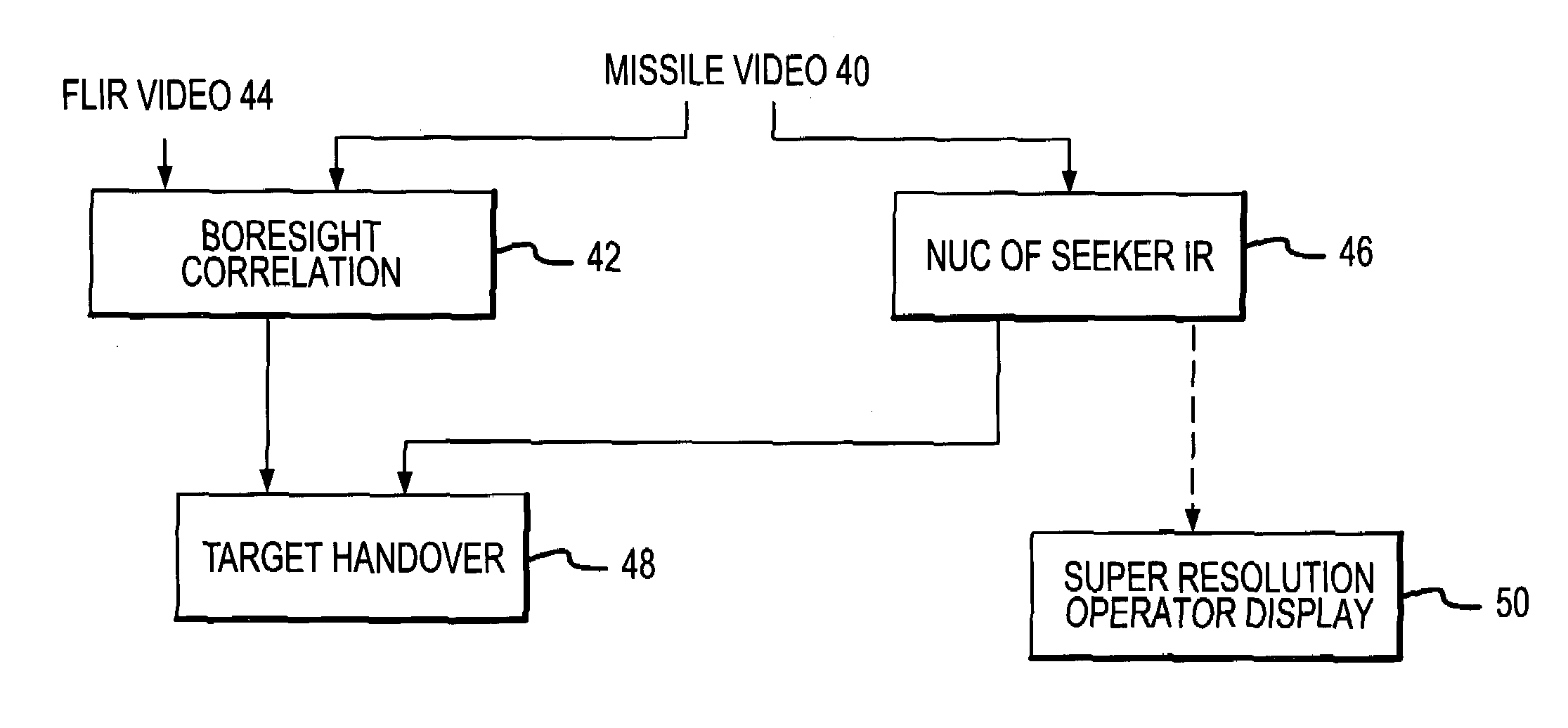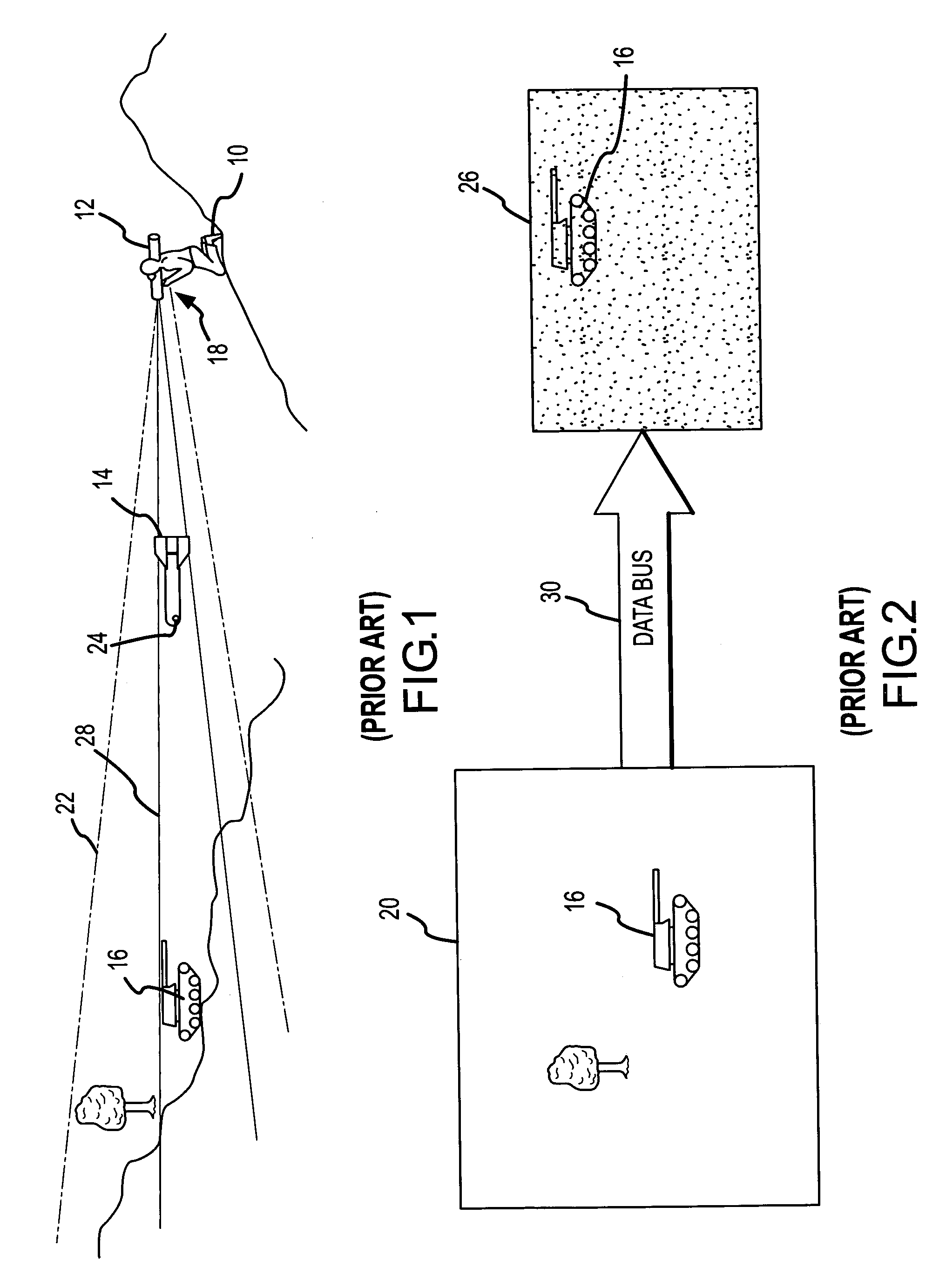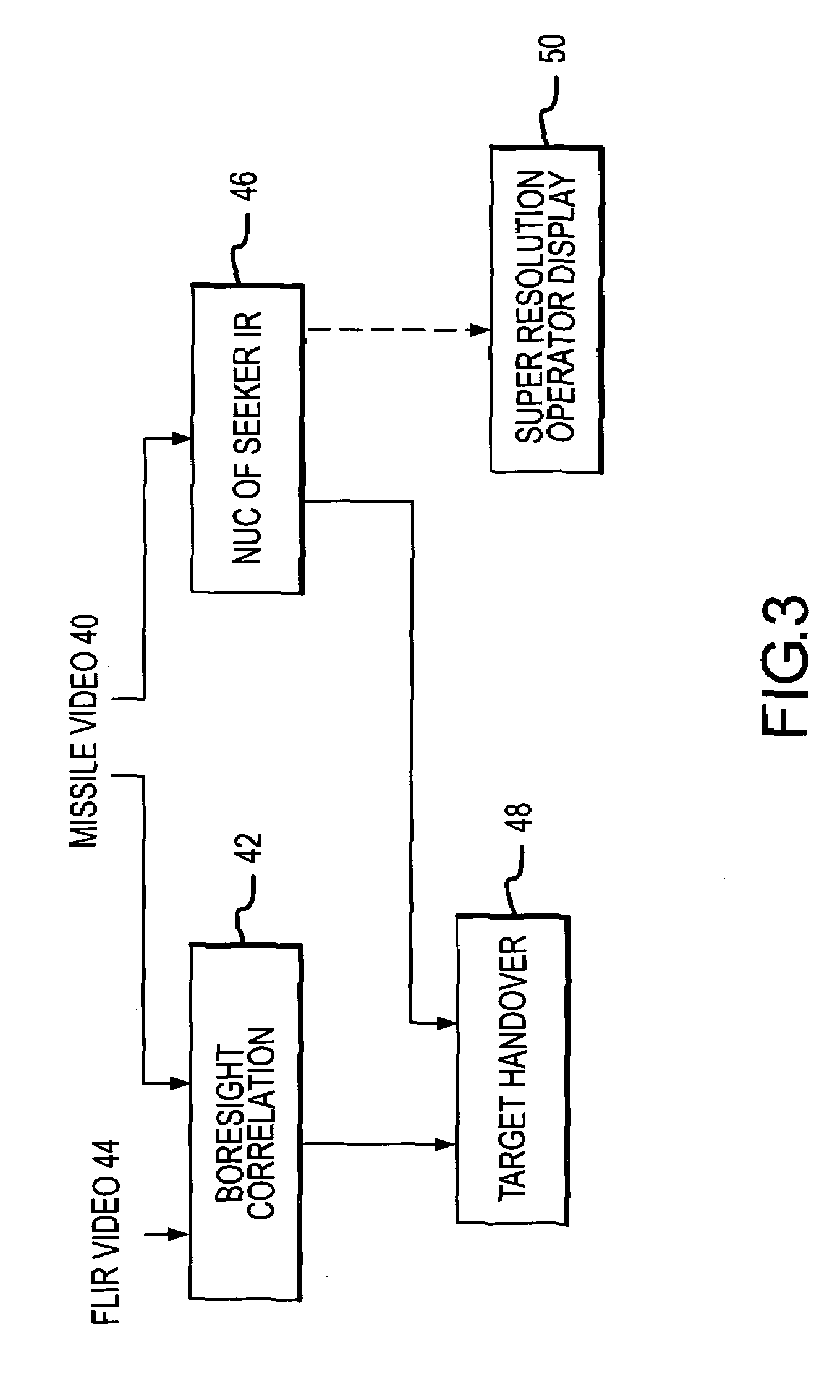FLIR-to-missile boresight correlation and non-uniformity compensation of the missile seeker
a correlation and missile technology, applied in the field of boresight correlation and non-uniformity compensation of missile seekers, can solve the problems of not being able to adapt to non-uniformities in the imager and not the scene, and not being able to sufficiently severe to interfere with correlation, etc., to achieve simple and streamlined boresight correlation, higher bandwidth, and higher snr.
- Summary
- Abstract
- Description
- Claims
- Application Information
AI Technical Summary
Benefits of technology
Problems solved by technology
Method used
Image
Examples
Embodiment Construction
[0030]The present invention provides for simple and streamlined boresight correlation of FLIR-to-missile video and for higher bandwidth, higher SNR, user friendly NUC of IR imagers.
[0031]As shown in FIG. 3, this is accomplished in part with a method that performs boresight correlation with un-NUCed missile video 40. This allows boresight correlation 42 with the FLIR video 44 and NUC 46 on the missile video 40 to be performed simultaneously thereby reducing the time required to perform target handover 48 from the FLIR to the missile seeker and fire the missile. NUC is not required for target handover, however it is useful to improve the SNR of the missile video. The NUC process also provides the capability of displaying enhanced, e.g., noise filtered and super resolved, imagery on an operator display 50.
[0032]The current approach to boresight correlation temporally processes the missile video from the IR imager to locate edges in an IR image, spatially processes the FLIR video in acc...
PUM
 Login to View More
Login to View More Abstract
Description
Claims
Application Information
 Login to View More
Login to View More - R&D
- Intellectual Property
- Life Sciences
- Materials
- Tech Scout
- Unparalleled Data Quality
- Higher Quality Content
- 60% Fewer Hallucinations
Browse by: Latest US Patents, China's latest patents, Technical Efficacy Thesaurus, Application Domain, Technology Topic, Popular Technical Reports.
© 2025 PatSnap. All rights reserved.Legal|Privacy policy|Modern Slavery Act Transparency Statement|Sitemap|About US| Contact US: help@patsnap.com



